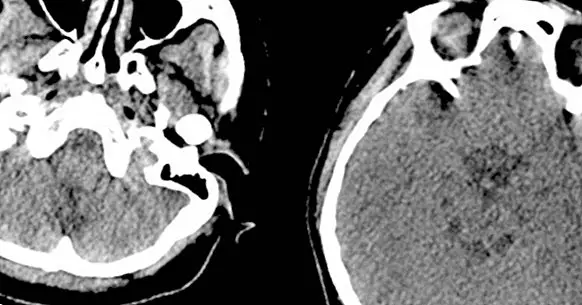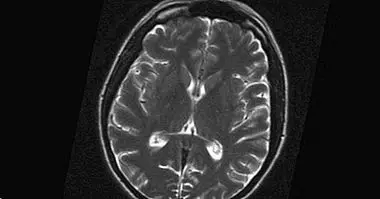Pfeiffer syndrome: causes, symptoms and treatments
The stage of intrauterine development is one of the most delicate periods of life, and since small alterations in the functioning of the organism can cause it to grow abnormally.
That is why the deformities that can appear during the development of the fetus they are capable of seriously compromising a person's quality of life, or even causing their death in a few months or weeks.
Pfeiffer syndrome is one of the diseases capable of leaving serious consequences physical and psychological in the life of the boy or girl, since it directly affects the growth of the encephalon. Next we will see what are the symptoms, causes, treatments and general characteristics of this health problem.
- Related article: "The development of the nervous system during pregnancy"
What is Pfeiffer syndrome?
The pathology known as Pfeiffer syndrome is a disorder of genetic causes whose main effect is the premature fusion of the bones of the skull , which makes the brain, by exerting pressure on the vault that covers it, cause deformities that are seen by the naked eye and that, in turn, the brain does not develop in the correct way.
This disorder was discovered by the German geneticist Rudolf Arthur Pfeiffer, who studied the case of a family whose limbs presented deformities in the hands, feet and head.
- Maybe you're interested: "Macrocephaly: causes, symptoms and treatment"

Causes
It is considered that Pfeiffer syndrome is a disease based on the genetic inheritance of a dominant trait , so that only one copy of the mutated gene is needed for the symptoms to develop. Both the father and the mother are capable of transmitting it.
In exceptional cases, it is possible that the mutation appears for the first time in the genealogical line of the last generations, which would also produce symptoms.
Types of Pfeiffer syndrome
There is more than one classification system for the types of Pfeiffer syndrome. One of the most popular is that of Greig and Warner, who distinguish forms of the pathology depending on its severity and highlighting the changes that are observed after the first corrective surgery, which must be early:
Type A: mild problems
No changes were observed after the operations, since the initial symptoms were mild.
Type B: moderate problems
The improvement is significant.
Type C: serious problems
The improvement after the operation is very significant.
symptom
As we have seen, the main symptom associated with Pfeiffer syndrome is the appearance of a deformity in the head .
In particular, the forehead is bulging, especially in the area that is above where the eyebrows will grow, and the eyes are bulging and with a large separation between them because of the lack of space inside the skull.
On the other hand, also because of the chain of deformations generated by the early fusion of the bones of the skull, the upper jaw is insufficiently developed , while the inferior one is, in comparison, disproportionately large, and hearing loss is frequent, since there is also no space for the parts of the ear to be well formed. It is also possible that mental retardation develops.
Another typical symptom of Pfeiffer syndrome is the incorrect alignment of the fingers and toes, or an excessive growth of the thickness of these. In some cases, in addition, they also appear malformations in organs of the chest, and breathing problems .
We must bear in mind that, although it is known that the causes of this pathology are fundamentally genetic, it does not appear simply due to the mutation of a gene, but that Pfeiffer syndrome can appear in different forms. In short, the same symptoms do not always appear nor are they equally evolved.
Diagnosis
Pfeiffer syndrome is diagnosed as soon as after birth. or , when the specialist doctor measures the proportions of the skull and fingers. However, before the birth it is already possible to detect signs of an abnormal development, which means that it remains waiting for birth to know exactly what pathology is involved.
Treatments
As we have said, it is very important to intervene quickly after detecting the symptoms of the pathology, in order to prevent deformities from causing secondary problems.
In any case, it is necessary to offer an individualized treatment to adapt to each specific situation, addressing the present problems taking into account the child's age and family context.In any case, the surgical procedure hurts to be recommended, since it allows to improve the development perspectives of the brain and the face, with all the benefits that this entails (especially for the eyes and the auditory capacity).
It is also common perform aesthetic operations simply to improve the appearance of the face , and prevent psychological problems that may arise linked to problems to relate to others, and self-esteem, etc.



















